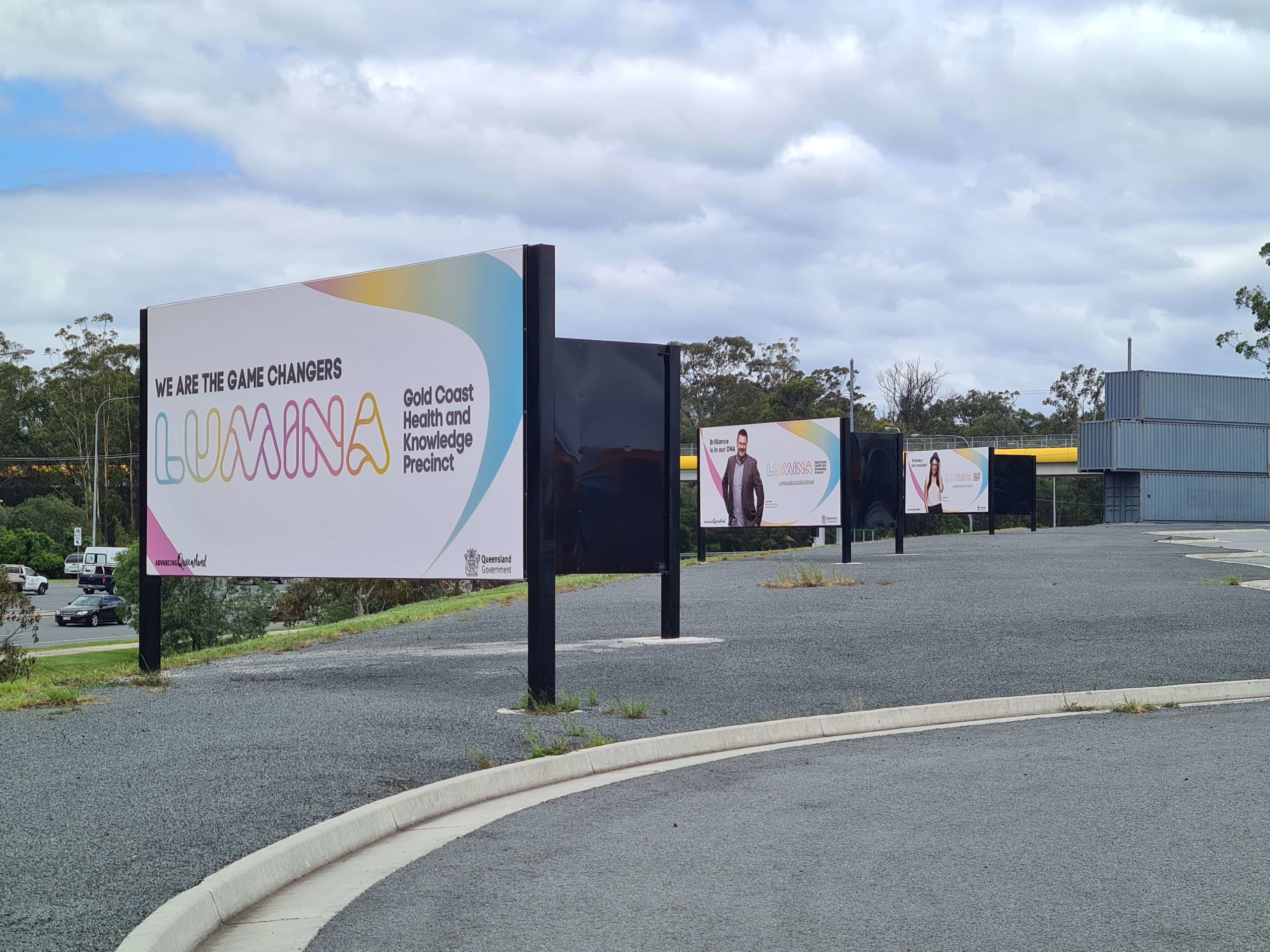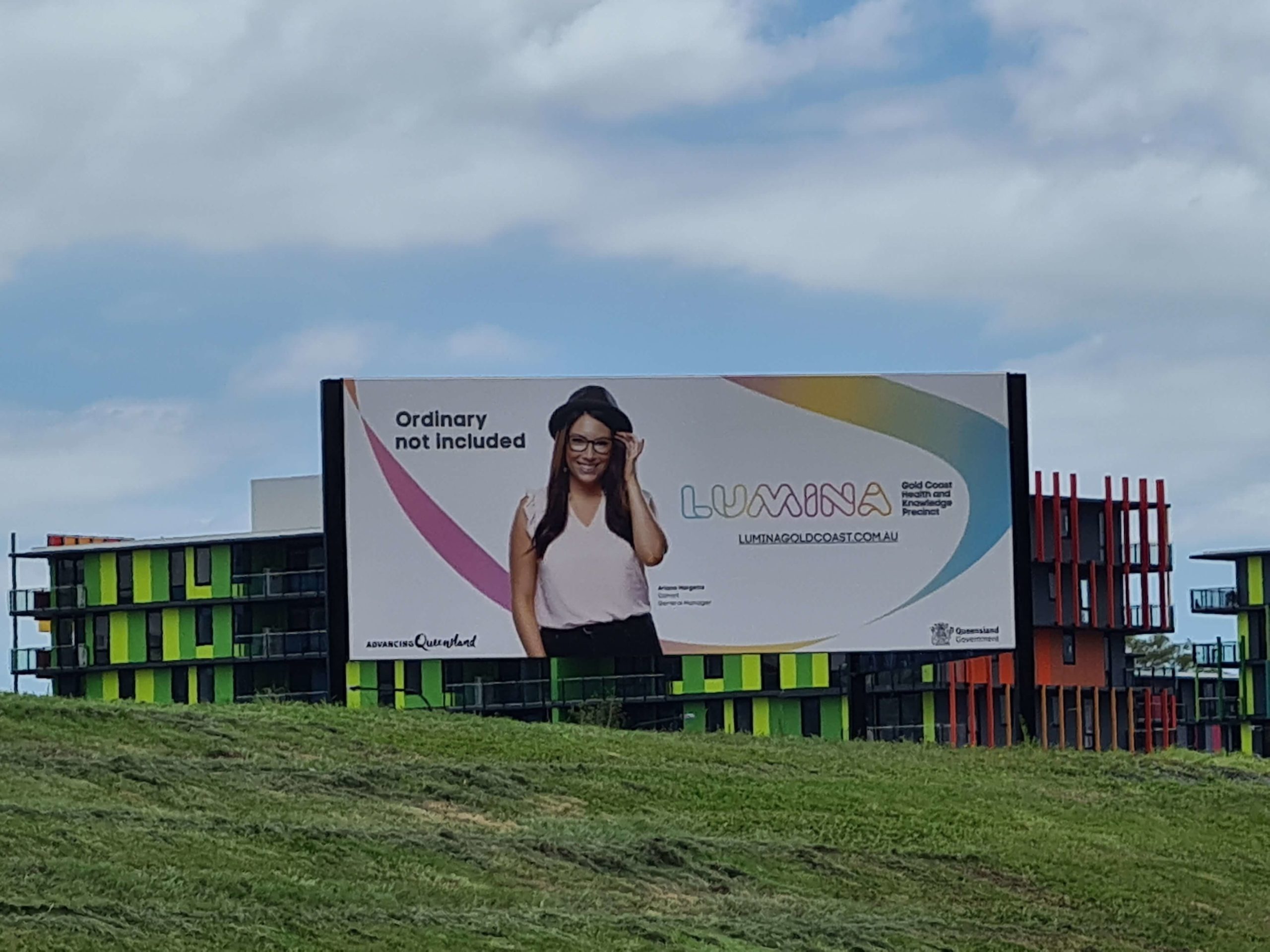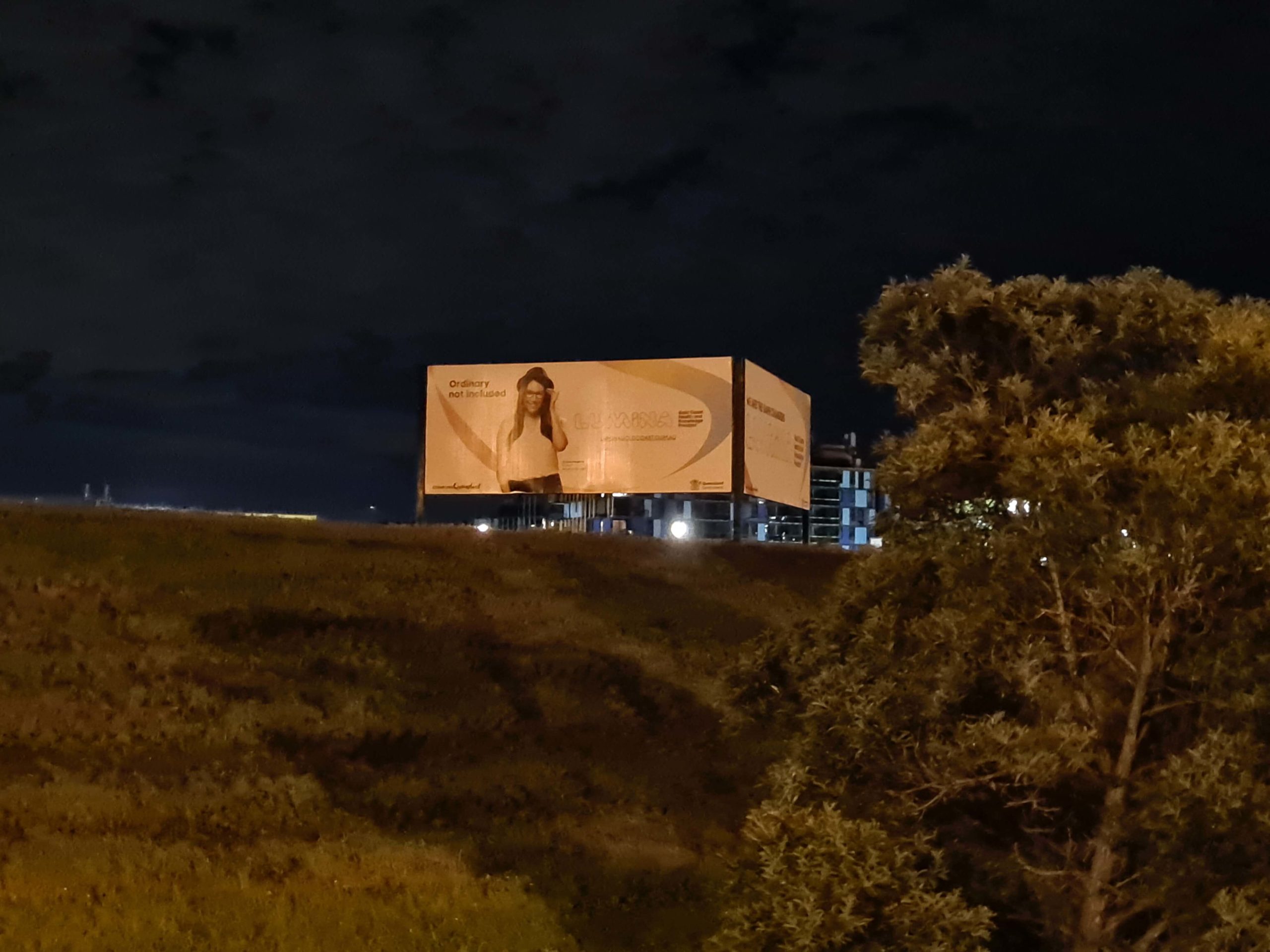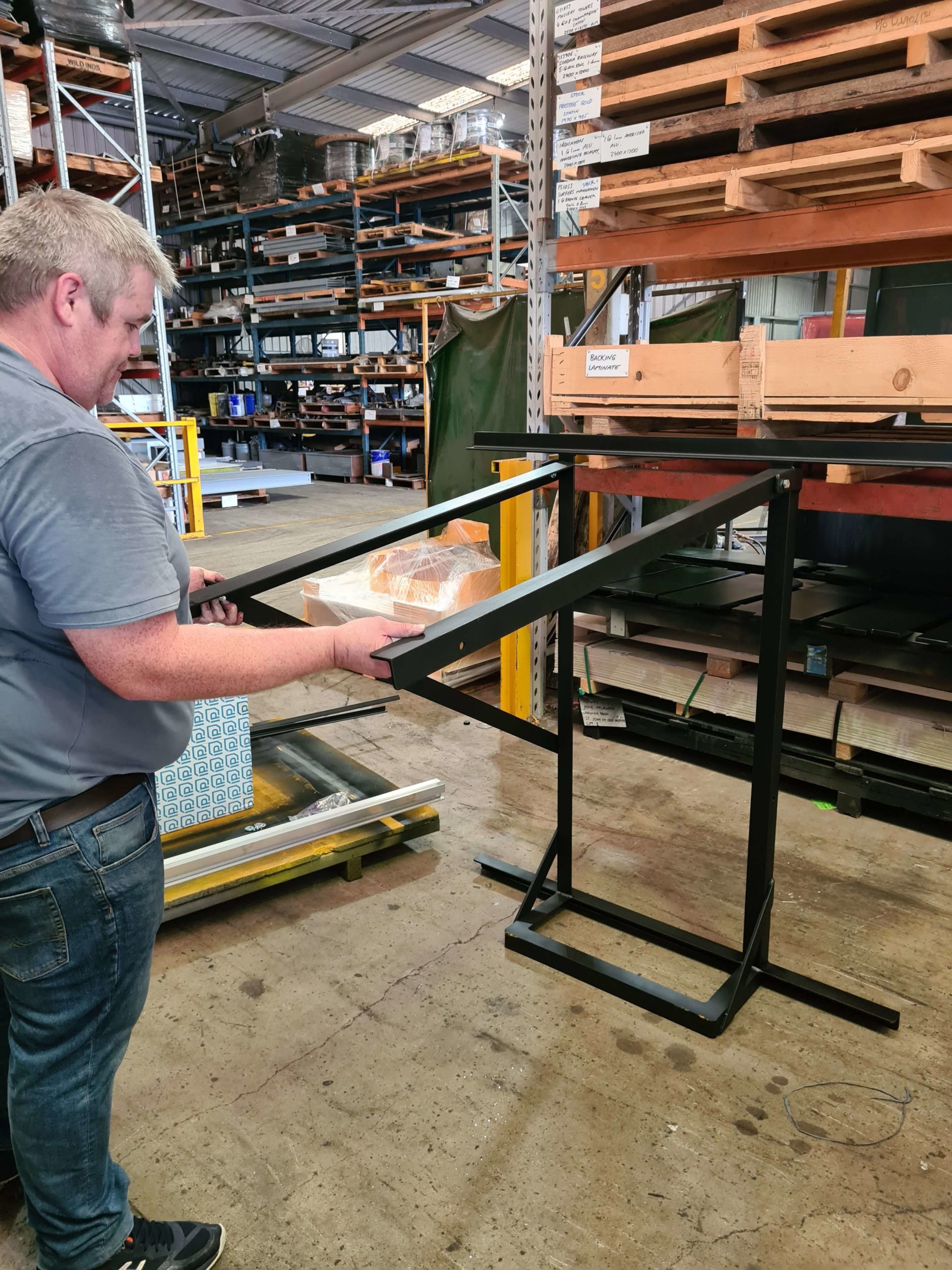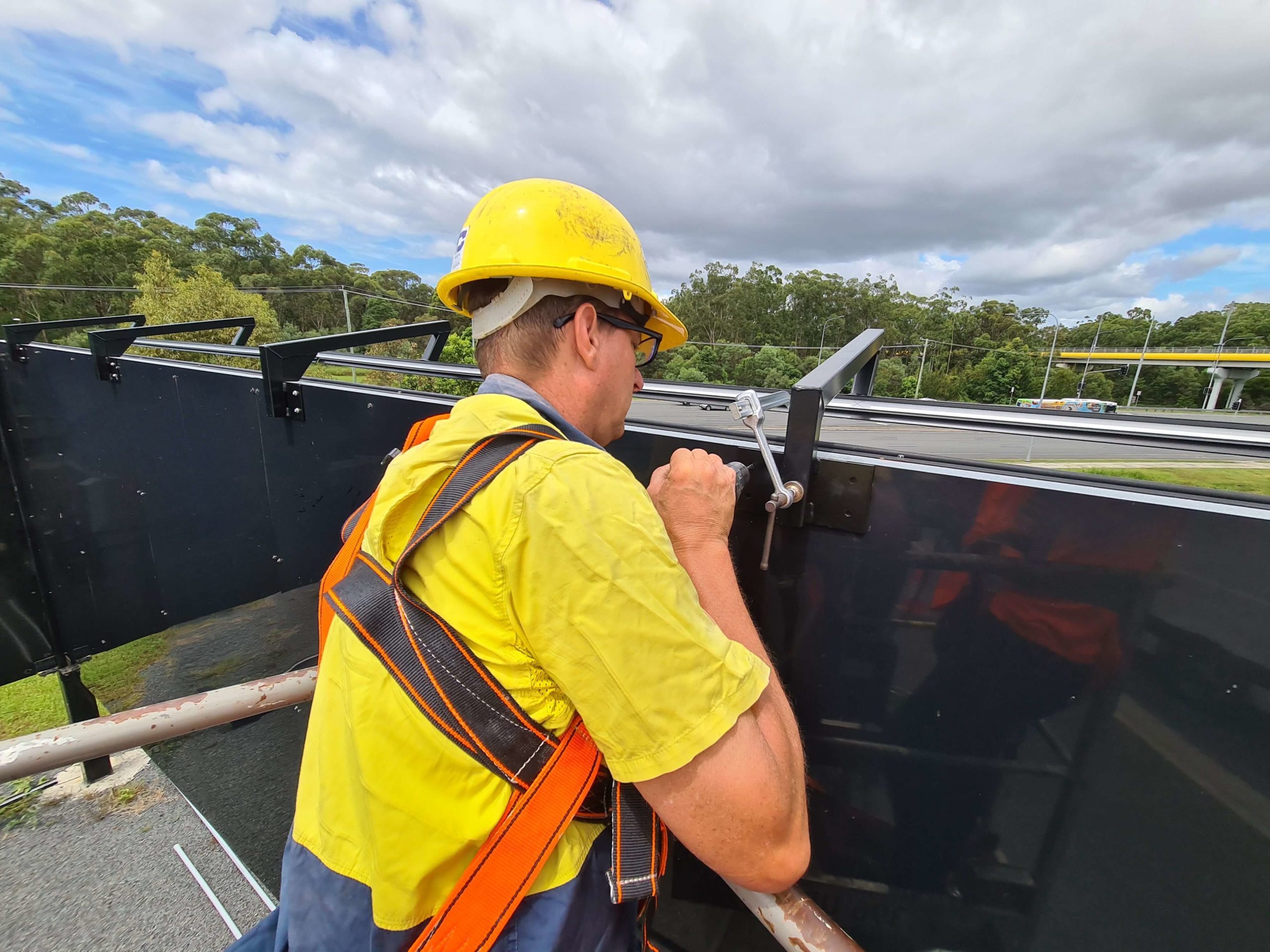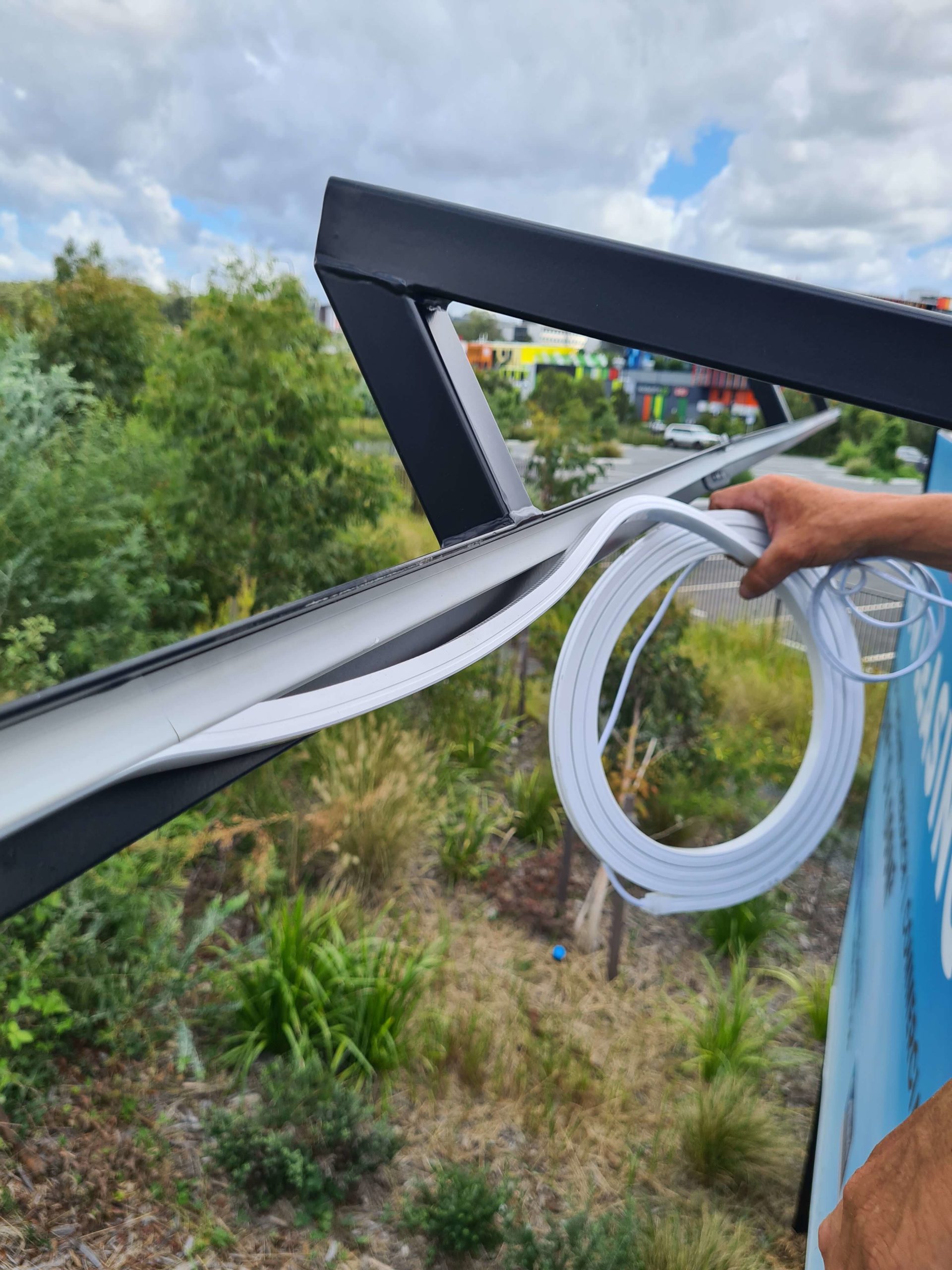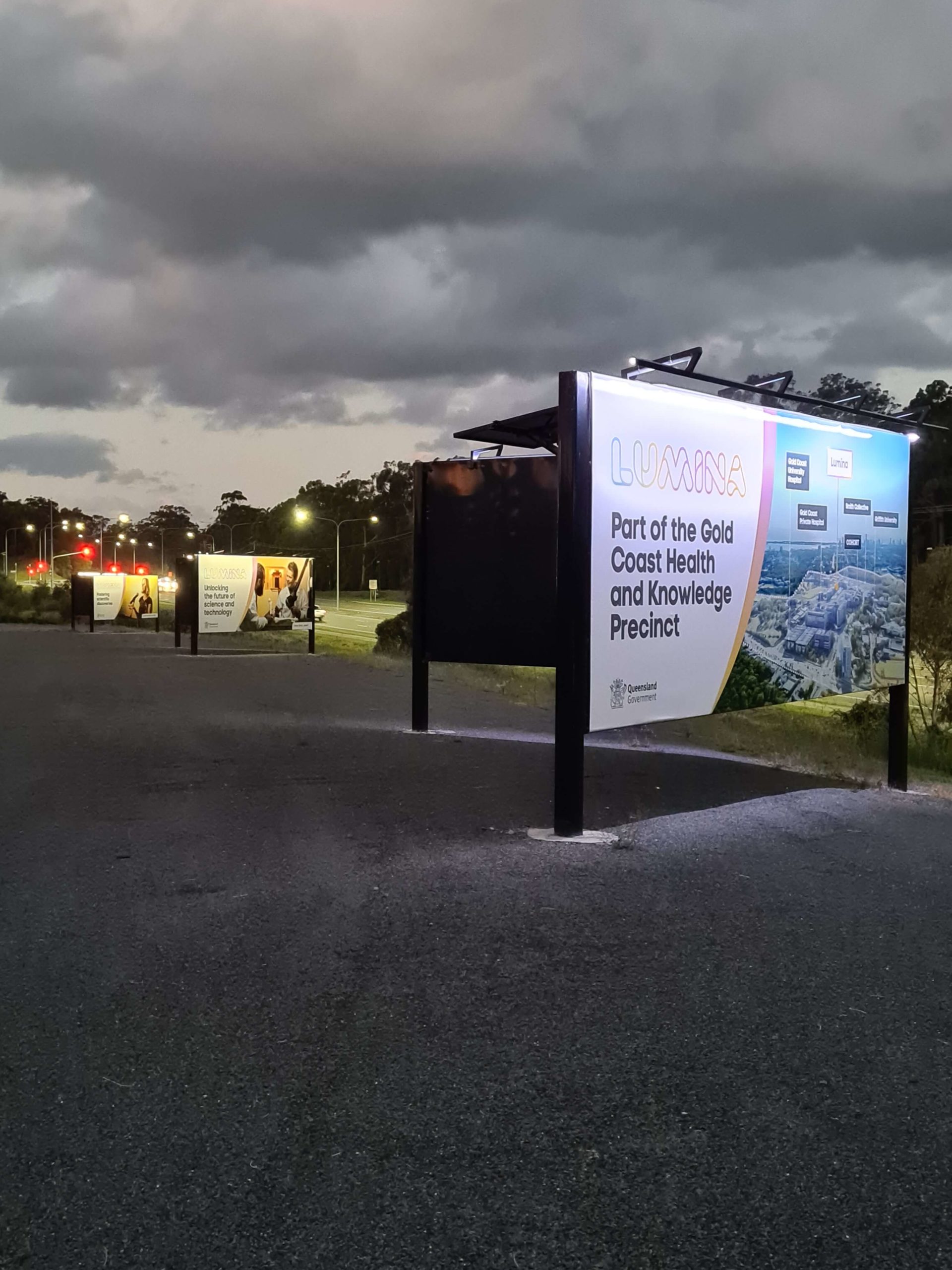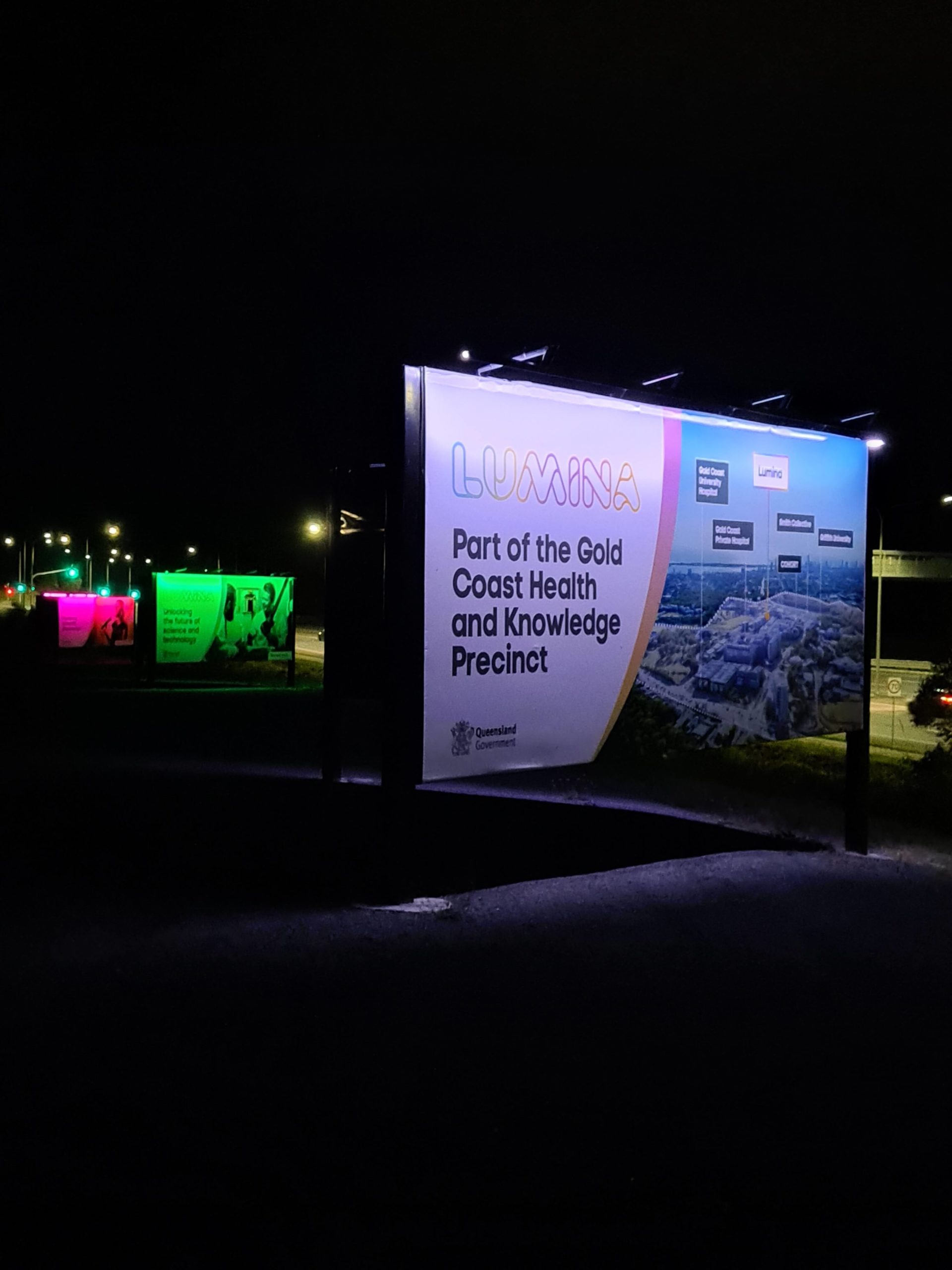Lumina Billboards
– Design, supply, instal custom solar billboard lighting for Queensland Government
– Completed 2022
– Glopro, RGBW, billboard lighting
Background
Lumina, a technology and health precinct on the Gold Coast, was faced with a unique challenge. They had five large billboards that needed to be lit up effectively at night to promote the creative space and technology innovations within Lumina. These billboards were remotely located, making it impossible to connect them to a traditional power source. The project, backed by the State Government through Economic Development Queensland (EDQ), required a lighting solution that would minimize glare, evenly light the billboards, and be powered by solar energy.
Solution
Custom Cantilever Brackets: Specially designed brackets, affixed to the top of each billboard, ensured security and prevented unauthorized access to lighting equipment while providing a stable platform for solar panels.
Discreet Solar Panels: Strategically placed back-mounted solar panels discreetly harnessed solar energy, ensuring a clean aesthetic with no visible solar equipment from the street.
RGBW Lighting Control: Advanced RGBW LED technology enabled individual control of billboard colors, enhancing visual appeal and allowing effortless remote customization.
Aesthetic Solar Panel Mount: A meticulously engineered mounting bracket securely held solar panels and control gear on the back of billboards, seamlessly combining functionality with aesthetics.
Results
The implementation of this innovative lighting solution yielded impressive results for Lumina. It effectively illuminated the billboards at night, effectively conveying Lumina’s message to onlookers and passersby. The solar-powered system substantially reduced energy costs and minimized environmental impact, aligning with Lumina’s sustainability goals. Additionally, the discreet placement of solar panels ensured that the billboards maintained their aesthetic appeal without visible solar equipment. The RGBW lighting control allowed for dynamic color changes, enhancing the billboards’ visual impact and making them stand out. The project’s success was achieved through collaborative efforts between Lumina and expert partners, including Springer Solar and Wild Industries. Notably, despite its complexity, the installation was efficiently completed within six days by a two-person team, demonstrating the project’s remarkable efficiency.

